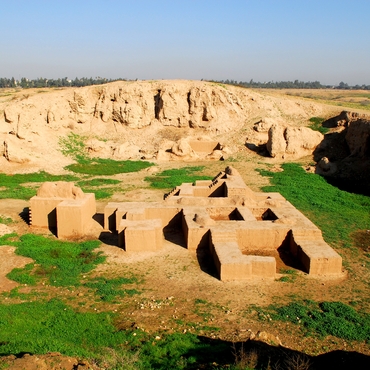
- Home
- The life of Jacques de Morgan
- Persia (1889-1912)
- Susa after Morgan
By 1912, Jacques de Morgan’s interest in Persia had begun to wane. He was disappointed not to have discovered the origins of Egyptian civilisation in Persia and felt frustrated by cuts to his budget. Questions in the Assemblé nationale impugning his management of the service further weakened his morale. His health had also begun to fail. After fifteen years at the head of the French archeological mission in Persia, he resigned.
Roland de Mecquenem (1912-1939)
During Jacques de Morgan's final years in office, responsibility for Susa, and particularly the excavation of the palace of Darius I was steadily transferred to one of his colleagues, Roland de Mecquenem, who was made site director after Morgan's resignation. As the Acropolis had already been extensively excavated, Mecquenem opened several new excavation sites, in the Royal City and the Apadana sector.
Roman Ghirshman (1946-1967)
After the Second World War, excavations in Susa resumed under the direction of Roman Ghirshman. He reopened the excavations at the palace of Darius I, and launched new studies of the Elamite and Achaemenid periods. He adopted the modern method of excavating in stratigraphic sequence over large open areas. This provided an overview of the site, level by level, and a better understanding of the remains.
Jean Perrot (1968-1979)
Jean Perrot continued the excavations in Susa from 1968 to 1979. He further refined and modernised the stratigraphic excavation methods used on the site. Based on a multidisciplinary approach and with the help of a skilled team to whom he assigned responsibility for specific sectors, he excavated new sections to obtain a broader understanding of the site. He studied the south side of the Acropolis, took an interest in the Neo-Elamite period, and excavated the palace of Artaxerxes II.


